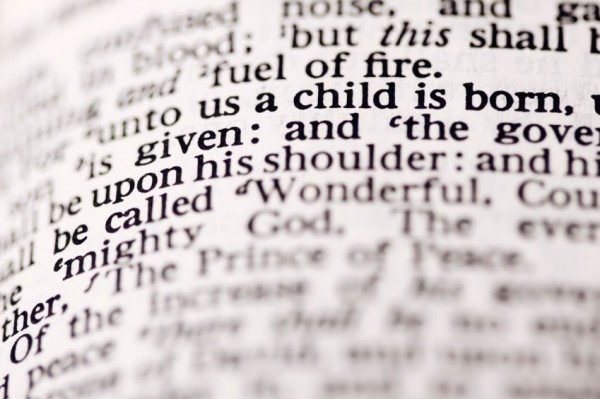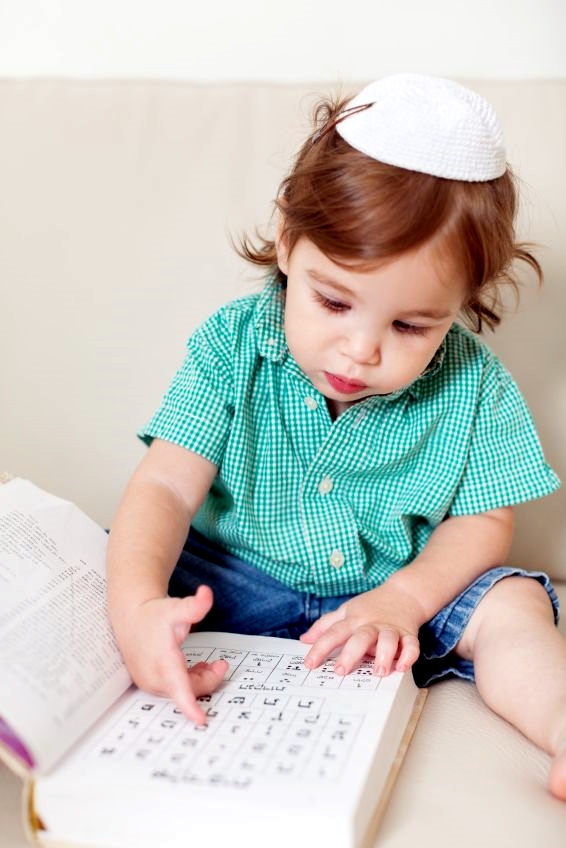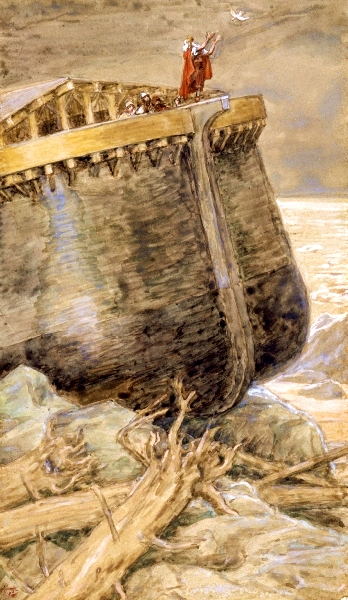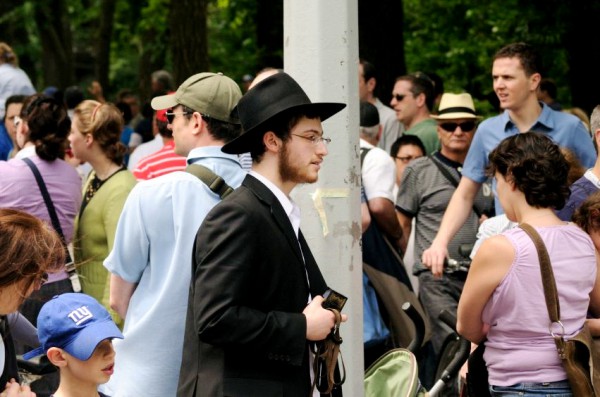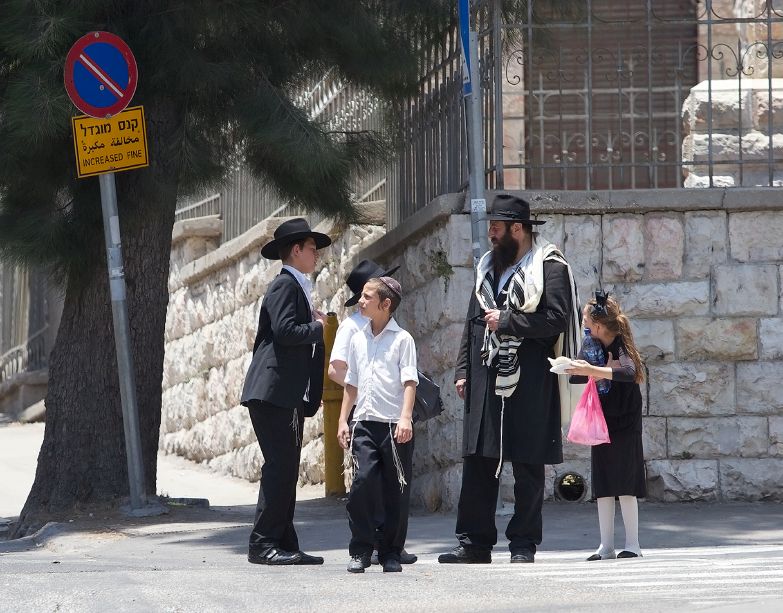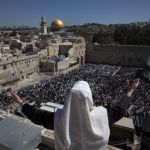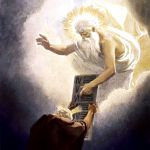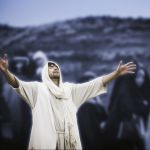Every week in Shabbat (Sabbath) synagogue services around the world the Torah and Haftarah (prophetic) portions are read.
The entire five books of the Torah are publicly read every year through a set reading cycle on Shabbat, Mondays, and Thursdays. But the Haftarah constitutes only selected portions of the Prophets and is read only on Shabbat and certain holy days.
The readings from the prophetic portions are, therefore, isolated and incomplete.
Most importantly, many of the prophecies concerning the coming of the promised Messiah are simply not read at all.
Although these prophecies are continually referred to throughout the Brit Chadashah (New Covenant), indicating that the people of Yeshua’s (Jesus’) day were familiar with them, today the Jewish People have almost no knowledge of them.
It is unknown when these prophecies were excluded from the readings, but some suspect that they were left out because they strongly support the conclusion that Yeshua is the Messiah and because they are mentioned in the New Covenant (New Testament).
Let’s take a closer look at what these readings consist of, which prophecies Yeshua Himself spoke of, and which ones point to Him as Messiah.

Although the Torah (Genesis, Exodus, Leviticus, Numbers, and Deuteronomy) is read in its entirety every year, the writings of the Prophets are not.
What’s in the Tanakh?
The arrangement of books in the Tanakh, or the Hebrew Bible, is somewhat different than the arrangement in the “Christian Bible,” though the same books are included.
There are three sections: the Torah, the Nevi’im, and the K’tuvim.
The first five books of the Tanakh is the section called the Torah (Teaching, Law).
The next section is the Nevi’im (Prophets). This section comprises essentially 19 prophetic books. However, a subsection of the Latter Prophets (Nevi’im Acharonim), is sometimes classed as one book called The Twelve (Shneim Asar or Trei Asar).
The remaining 11 books make up a section called the K’tuvim (Writings). These books include Psalms, Proverbs, Daniel, Ezra-Nehemiah and Chronicles.
What Is the Haftarah?
The word Haftarah may suggest to the English ear that it is half of the Torah, but it actually means parting or some say concluding and is not related to the word Torah.
The Haftarah are selected readings from the Nevi’im.
Each Haftarah reading usually relates in some way to the Torah portion (Parasha) for that Shabbat.
For instance, the Torah and Haftarah portions for Parasha Eikev this past Shabbat point to God as the source of our blessings. In both readings, Adonai reveals Himself to the Jewish People as their Redeemer and Provider.
Still, it must be re-emphasized that not every prophecy in the Nevi’im is read in the synagogues.
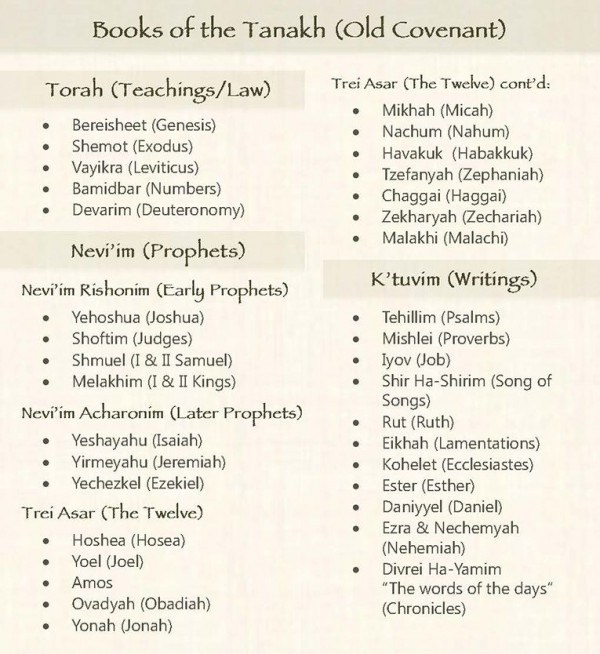
The Books of the Tanakh (Jewish Bible or Old Testament) are organized somewhat differently than the Old Testament books in the Christian Bible.
Yeshua Publicly Reads the Haftarah
The reading of the Prophets on Shabbat is a very old tradition, but it is not known how old.
Actually, the earliest mention of this practice is found in the Brit Chadashah.
In Luke 4:16–19, we see that reading the Prophets after the Torah portion was already an accepted practice.
In that passage of Luke, Yeshua read in a Nazareth synagogue from the scroll of the ancient Hebrew Prophet Yeshayahu (Isaiah):
“The Spirit of the Lord is on Me, because He has anointed Me to proclaim good news to the poor. He has sent Me to proclaim freedom for the prisoners and recovery of sight for the blind, to set the oppressed free, to proclaim the year of the Lord’s favor.” (Luke 4:18–19; Isaiah 61:1–2)
It was then, after the Haftarah portion, that Yeshua, to the amazement of all, proclaimed Himself the fulfillment of this Messianic Prophecy.
After handing the scroll of Isaiah back to the attendant, Yeshua said to the congregation: “Today this scripture is fulfilled in your hearing.” (Luke 4:21)
Yeshua essentially began His ministry by highlighting the connection between the Messianic prophecies and His arrival as Yeshua of Nazareth.
Because He revealed His identity to them by using the Messianic prophecies in Scripture, we can know for certain that this is an effective method for sharing Yeshua HaMashiach (Jesus the Messiah) with the Jewish People.
That is why Bibles For Israel wants to place a copy of the Messianic Prophecy Bible into the hands of every Jewish person. This Bible will highlight the Messianic prophecies using Jewish terminology and evidence.
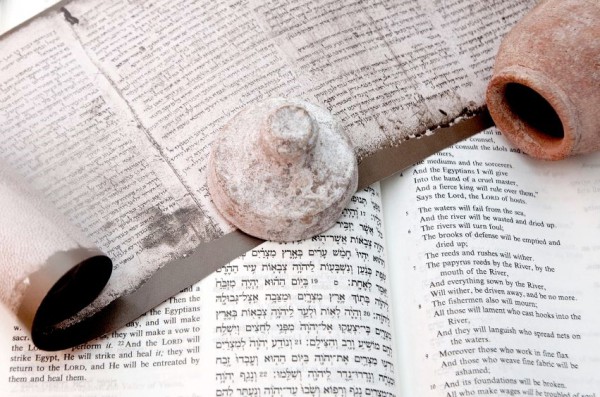
“Many peoples will come and say, ‘Come, let us go up to the mountain of the LORD, to the temple of the God of Jacob. He will teach us his ways, so that we may walk in his paths.’ The law will go out from Zion, the word of the LORD from Jerusalem.” (Isaiah 2:3)
The Missing Prophecies in the Haftarah
Although it is obvious from the New Covenant that the Messianic prophecies in the Nevi’im were at one time read and known, for many, many centuries, they have not been read publicly.
Sadly, Isaiah 60:1–2, which Yeshua read in Nazareth, is one that has been omitted from the Haftarah readings.
So have the following prophecies concerning the Messiah:
The Suffering Servant (Isaiah 52:13–53:12)
“Just as there were many who were appalled at Him—His appearance was so disfigured beyond that of any human being and His form marred beyond human likeness.” (Isaiah 52:14)
The Virgin Birth (Isaiah 7:14)
“The Lord himself will give you a sign: The virgin will conceive and give birth to a son, and will call Him Immanuel [God with us].”
The Messiah Is to Be Born in Bethlehem (Micah 5:2)
“But you, Bethlehem Ephrathah, though you are small among the clans of Judah, out of you will come for Me one who will be ruler over Israel, whose origins are from of old, from ancient times.”
Messiah Rides into Jerusalem on a Donkey (Zechariah 9:9)
“Rejoice greatly, Daughter Zion! Shout, Daughter Jerusalem! See, your king comes to you, righteous and victorious, lowly and riding on a donkey, on a colt, the foal of a donkey.”
Betrayed for 30 Pieces of Silver (Zechariah 11:13)
“The LORD said to me, ‘Throw it to the potter’—the handsome price at which they valued Me! So I took the thirty pieces of silver and threw them to the potter at the house of the LORD.”
The New Covenant (Jeremiah 31:31-34)
“The days are coming,” declares the Lord, “when I will make a new covenant with the people of Israel and with the people of Judah…. I will put My law in their minds and write it on their hearts. I will be their God, and they will be My people…. I will forgive their wickedness and will remember their sins no more.”
The Arrival of Messiah (Malachi 3:1)
“I will send My messenger, who will prepare the way before Me. Then suddenly the Lord you are seeking will come to His temple; the messenger of the covenant, whom you desire, will come,” says the LORD Almighty.
Several more Messianic prophecies that clearly point to Yeshua have been intentionally omitted from the weekly synagogue Haftarah readings without public knowledge or the consent of most Jewish people.
Some scholars say that the omission was never intentional, explaining that these prophecies just don’t serve the purpose of the Haftarah.
Yet Yeshua found great purpose in them. As He walked alongside two disciples on the road to Emmaus, “starting with Moses and all the prophets, He explained to them the things that can be found throughout the Tanakh concerning Himself.” (Luke 24:27)
The Purpose of the Haftarah Readings
While the public reading of the Torah began during the Babylonian captivity in the 5th century BC, some rabbinic sources believe that the Haftarah readings may have begun during the reign of the foreign King Antiochus Epiphanes around the 2nd century BC.
Because this king forbade the Jews from studying the Torah, the priests searched for portions of Scripture in the Prophets that could be tied to the theme of the Parasha (Torah reading) for that week.
As an example, instead of reading the account of Noah and the ark, the portion from Isaiah which makes reference to the “waters of Noah” would be read.
“This is like the days of Noah to Me: as I swore that the waters of Noah should no more go over the earth, so I have sworn that I will not be angry with you, and will not rebuke you.” (Isaiah 54:9)
Other Jewish rabbinic sources propose another theory: the Pharisees were trying to uphold their belief that the Prophets carried equal authority as the Torah—a claim that the rival Sadducees rejected.
The Haftarah readings, therefore, served to establish the Prophets as important and worthy of study in addition to the Torah.
The Haftarot (plural for Haftarah) include valuable lessons in Biblical history, such as the stories of David, Saul, Daniel, Rahab, and other Biblical heroes and heroines.
Also, on major Biblical festivals, Haftarot that correspond to the theme of the special holiday are read.
So, the holidays and history of the Jewish people are well taught through the readings today; however, the Prophets are not well understood because so many of the prophecies are not publicly read.
If only the Jewish people knew how important these prophetic writings really are.
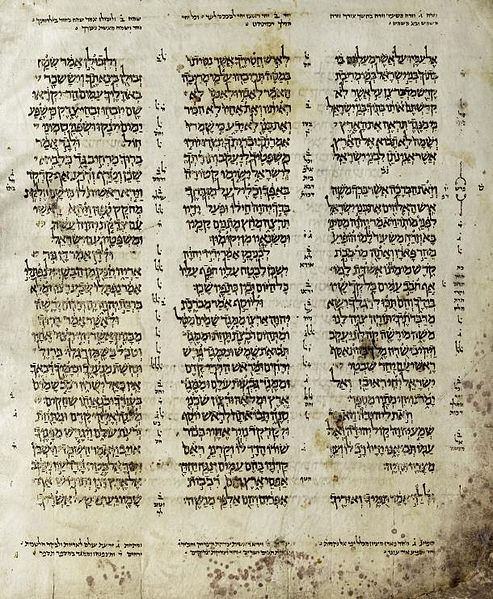
A page from the Book of Jeremiah from the Aleppo Codex, the oldest and most complete Hebrew manuscript available, which is one of the manuscripts being used for the Messianic Prophecy Bible.
The Purpose of Prophets
Most of the prophets did not seek out their position; they were called by God to deliver a particular message to the nation of Israel. They were His voice to His people.
Before the destruction of the First Temple in 586 BC, most often, the messages God delivered through the ancient Hebrew prophets were warnings of impending Divine punishment if the people did not repent and turn from their wicked ways.
Their pleas for repentance fell largely on deaf ears, and so the people received the judgment the prophets warned them about.
“And when the people ask, ‘Why has the LORD our God done all this to us?’ you will tell them, ‘As you have forsaken Me and served foreign gods in your own land, so now you will serve foreigners in a land not your own.’” (Jeremiah 5:19)
Prophets were not only sent by God to deliver bad news, however; they also comforted the people by bringing them hope of restoration.
“Comfort, comfort My people,” says Adonai. (Isaiah 40:1)
Today, we still need both of these messages—warnings to stay on the narrow path that leads to life, as well as comfort in our losses, encouragement in the trials of life, and the hope of things to come.
The ultimate comfort and restoration that would come through the Messiah was not to be fulfilled in the time that these prophets wrote, but at a future date.
Therefore, many prophecies throughout the Tanakh reveal additional information regarding who this Restorer would be.
Sometimes they appear in the most unlikely of books. Here is one from the Book of Proverbs:
“Who has gone up to heaven and come down? Whose hands have gathered up the wind? Who has wrapped up the waters in a cloak? Who has established all the ends of the earth? What is His name, and what is the name of His son? Surely you know!” (Proverbs 30:4)
The prophets were not alone in their responsibility to discern the times, however.
The priests who performed the rites of the Temple services were also to search all the Scriptures and discern the time that the Son—the Messiah—had come.
Many of these priests, however, missed it, although even that was the fulfillment of Messianic Prophecy:
“The people of Jerusalem and their rulers did not recognize Yeshua, yet in condemning Him they fulfilled the words of the prophets that are read every Sabbath.” (Acts 13:27)
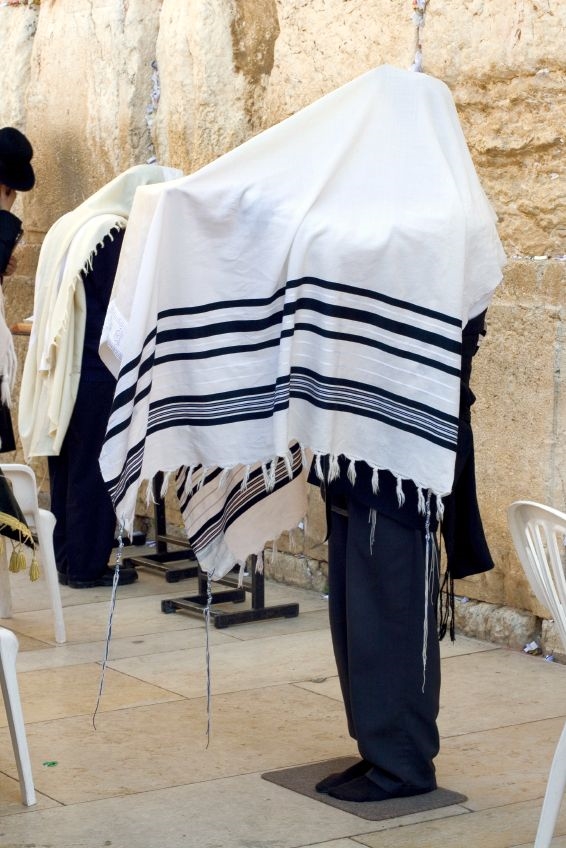
A descendant of the tribe of Levi recites the Priestly Blessing over the congregation at the Western (Wailing) Wall. This is done with the shoes removed, hands washed, head covered with the tallit (prayer shawl), and hands outstretched toward the congregation.
Restoring the Message of the Hebrew Prophets
It is a tragedy that the majority of God-fearing Jewish people, even those who attend synagogue services regularly, do not have knowledge of these crucial Scriptures that point to Yeshua HaMashiach (Jesus the Messiah).
This is why it is so essential that we give the Jewish people back the whole Bible, and not just selected portions which have been pre-approved by rabbinic consensus and stripped of all “Messianic” connotations.
These Messianic Prophecies carry a powerful message.
For instance, one of our ministry workers visited her elderly Jewish aunt who was in the hospital in Canada.
Upon reading to her several of the Messianic prophecies which have been omitted from the designated schedule of Haftarah readings, including Isaiah 53, her aunt gladly received Yeshua as her Messiah and found salvation just a short while before her passing.
“But He was pierced for our transgressions, He was crushed for our iniquities; the punishment that brought us peace was on Him, and by His wounds we are healed.” (Isaiah 53:5)
When she heard that these Messianic prophecies have been omitted from the synagogue readings, she was incensed!
“Why have the rabbis taken these verses out of the readings?” she asked.
Sadly, the reason seems clear.
Some Israeli scholars and academics are beginning to admit that the rabbis perhaps omitted them intentionally. They may have been fearful that a public reading of these Messianic prophecies would cause people to believe that Yeshua is the Messiah.
Although we may be grieved by the exclusion of these important Messianic prophecies from the Jewish synagogue readings, we can be comforted that in 2005 at the 14th World Congress of Jewish Studies in Jerusalem a call went out for critical discussion of this very issue.
As well, in 2013 at the 16th World Congress of Jewish Studies, Messianic Jews made their first official appearance at this international gathering of distinguished academics, teachers, and experts.
“Believe in the LORD your God, so shall you be established; believe His prophets, so shall you prosper.” (2 Chronicles 20:20)




